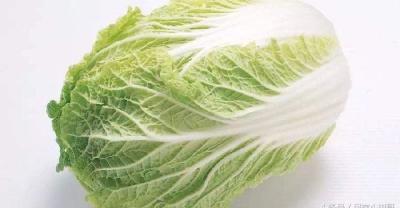How to grow blood-tonifying vegetables
Buxue vegetable, also known as Guanyin vegetable, blood bracken, its main effect is used for tonifying blood, is an excellent blood health vegetable. At present, Buxue vegetable is very popular in the market, but the output has not increased significantly. In China, Buxue is mainly planted in Fujian, Sichuan, Guangxi, Hunan and other places, the planting scale is not very large. So today let's learn the planting method of tonifying blood vegetables.

1. Planting environment
Buxue vegetable is a kind of vegetable which can be planted all the year round because of its strong resistance, easy survival, management, barren tolerance, strong disease resistance and so on. However, in order to ensure the quality of Buxue vegetable, the soil covered with planting requires no pollution, pure water quality and better natural ecological environment. In order to increase the yield of Buxue vegetable, the content of bosom friends in the planting land should be rich, and the fertilizer and water retention of the soil should be strong. Finally, soil preparation and adequate application of base fertilizer, the base fertilizer is mainly organic fertilizer, with the use of compound fertilizer, urea and phosphate fertilizer for deep ploughing, border land can be planted.
2. Planting method
There are two cultivation methods of Buxue vegetable, but at present, the most common way we use is cutting propagation, so that the growth cycle of planted Buxue vegetable is shorter, the quality is guaranteed, and the survival rate is also very high. Another is seed reproduction, which is the most traditional planting method, but also the most practical one. The best time for cutting planting is in spring and autumn every year, and new roots can be produced about a week after cutting.
3. Reasonable close planting
After the survival of Buxue vegetable, we need to carry out inter-seedling, uniform seedling and supplementary seedling, so as to ensure that the seedlings are uniform in the field. Generally speaking, transplanting can be carried out about 20 days after planting, when the distance between each plant in the field is maintained at 35 cm, the distance between each row is kept at about 40 cm, and about 3, 000 plants can be planted per mu. After planting, we should reasonably spray carbendazim solution, which is beneficial to the rooting and rooting of blood-tonifying vegetables.
4. Field management
After the planting of Buxue, we should carry out a watering, which can promote the growth of the new root and make it enter the slow seedling stage as soon as possible. In the growth process of Buxue vegetable, we should often water it to keep the soil moist. About half a month after the planting of Buxue vegetable, we need to carry out the first topdressing, mainly compound fertilizer, combined with ploughing, and clean up the weeds in the field in time. In the late growth of Buxue vegetables, we need to spray foliar fertilizer every ten days or so to ensure the quality of Buxue vegetables. Finally, we should pay attention to the harm of aphids to blood vegetables, generally can use dimethoate EC for prevention and control, but it is best not to spray within half a month before harvest, otherwise it will affect the quality of blood vegetables.
The growth cycle of Buxue vegetable is very short, and it can be harvested in about 50 days, so we should pay attention to the time of harvest to avoid picking it too late and affecting the quality of Buxue vegetable. After harvest, topdressing can be carried out to promote the growth of the next batch of blood vegetables and increase the yield of blood vegetables.
- Prev

Which is safer to eat, greenhouse vegetables or open field vegetables?
When people mention greenhouse vegetables, the first reaction is pesticide residues, they will say that there are too many pesticides, toxic, or greenhouse vegetables are not delicious, so many years,.
- Next

Mushroom management of Flammulina velutipes: how long does Flammulina velutipes open bags to produce mushrooms? Flammulina velutipes roots can grow mushrooms again.
Water management of Flammulina velutipes during mushroom emergence period
Related
- Where is it suitable to grow horseradish in China? it is expected to see the middle altitude horseradish in Alishan.
- How to prevent tomato virus disease reasonably? (Control methods included)
- Many people like to plant towel gourd on the balcony. What are the main points of this method and management?
- What crops can chili peppers be mixed with?
- Fertilization techniques and matters needing attention in Tomato
- What are the grafting techniques for peach seedlings in spring?
- Harm and control methods of root swelling disease of Chinese cabbage
- What are the pests of sweet potatoes? How to prevent and cure it?
- Symptoms, causes and Control methods of navel Rot in Tomato
- The cause of "Cucumber rotten bibcock" in Farmers' planting Cucumber and its Control Plan

